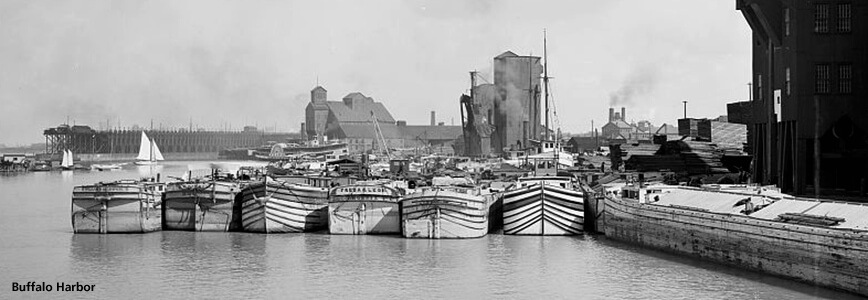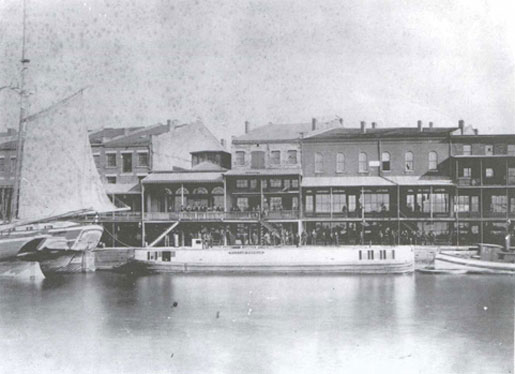While thousands of locals and tourists will visit Canalside this summer for concerts, biking and other outdoor activities, many may not realize the significance of its namesake and its importance to the development of the city of Buffalo.
The Erie Canal is central to Buffalo’s history and was the major reason the city became a commercial and industrial powerhouse in the 1800s.
History of Buffalo & The Erie Canal
Buffalo began as a small village located at the connection of the Buffalo River and Lake Erie. This eventually became home to the Erie Canal, considered one of the country’s greatest engineering achievements.

According to the Erie Canalway Heritage Center, travel from Albany to Buffalo took two weeks by stagecoach in 1825, but the Erie Canal shortened the journey to five days. The Erie Canal brought goods and passengers, which directly contributed to Buffalo’s prosperity in trade and helped support its growth in culture, architecture and the arts in the late 1800s and early 1900s.
The Canal helped Buffalo eventually become the largest inland port in the nation as well as the unofficial grain capital of North America, which led to the construction of the city’s famous grain elevators, now used to host live performances, events and historical tours.
Erie Canal Leads to Cultural & Economic Growth

In the late 1800s, railroads became increasingly dominant and complemented the canal in supporting Buffalo’s economic and cultural growth.
Buffalo’s outer harbor also played a significant role in the city’s economy and history. Located just outside of Erie Canal Harbor on the banks of Lake Erie, the outer harbor became home to “heavy manufacturers” producing cement, copper, steel, and other important materials that contributed to the city’s industrial growth.
The Outer Harbor factories also provided many blue-collar jobs, which helped contribute to the “hardworking culture and down-to-earth disposition of the region and its residents,” according to the Erie Canal Harbor Development Corporation.
While most of the city’s factories have since shut down, most Buffalonians will agree that the city’s blue-collar work ethic and gritty mentality remains.
The Erie Canal Today
Today, the revitalized Canalside area in downtown Buffalo and other natural areas of beauty connected to the Erie Canal, including Gateway Park in Tonawanda, have helped reinvigorate the city with new energy, business and tourism.

In the heart of Canalside is HarborCenter, a large building connected to KeyBank Center, home of the Buffalo Sabres. Featuring a large Marriott Hotel, 716 Food & Sport restaurant (with its one-of-a-kind television projector), several hockey rinks and a variety of small shops, HarborCenter has become a symbol of the revival of the area that brought Buffalo to prominence.
As Visit Buffalo Niagara puts it, “While Buffalo helped build the canal, the canal also helped build Buffalo.” Today, the Erie Canal and its surrounding area continue to draw visitors and businesses to the city, helping to support Buffalo’s present growth and revitalization.

 Fair Housing Notice
Fair Housing Notice 